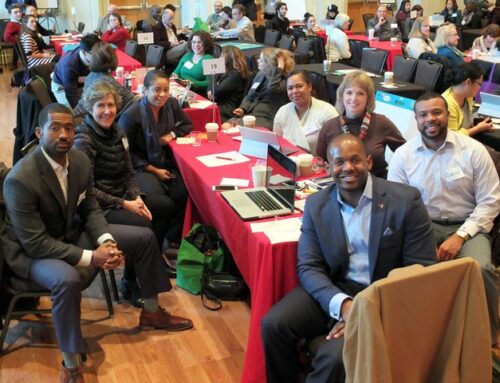Have you struggled with getting your PMO setup or with getting PM practices in place in your organization?
It may not be the best practices themselves, but the way you are going about implementing them that is causing the problem.
In a recent article, I talked about a concept I call “boiling the ocean” when it comes to implementing a PMO and PM best practices. The idea is that you take on too many new things at once, because you are excited about the future of the organization you are creating and are eager to make a big impact. However, you start hitting change resistance along the way because it’s more than people can handle at one time.
Love the enthusiasm and so do many others…until it comes time to start using everything. Then it all starts falling apart.
In the field of Psychology, there is this concept called the Stress Response. It’s how your body and mind react when you are in a stressful situation and is usually characterized by three different behaviors:
Fight – You start to see pushback on the changes you are trying to make. People aren’t using the tools and templates you have established. They will fight you even when their boss says they have to do it. This is the more aggressive response, but easy to spot because you know how they feel.
Flight – They run. Fast. Have you had trouble getting their attention? Are they acting like you don’t exist? This one is a little more difficult to spot because – You may see this in the form of passive aggressive behavior – they say they are going to comply, but do something totally different the moment they step out of the room. You may not know this is happening right away, but overtime, you notice they are running in the opposite direction when they see you coming!
Freeze – They just don’t take any action at all. They seem stuck. It seems like they have no idea what they are supposed to do. Nothing gets implemented and you feel like you are saying the same things over and over again…your face is turning blue.
So what do you do about it?
Fight – Don’t fight back, but be firm. Going slowly doesn’t mean that you are letting people push you back to the dark ages of chaos. It means that you are standing your ground and continuing to press forward. Keep making progress, but avoid creating a firestorm. A battle will only distract you and your leadership team from forward momentum. And, by the way, if you do go into battle, you won’t win even if you win. A defeated opponent is not one that is likely to cheerfully implement your process or tools in the future. They will just bide their time until the next battle or apply the freeze or flight approach. Either way, you lose.
Flight – Persistently stay engaged. Don’t give them the opportunity for flight. Do change with them, not to them. Make sure that you are taking every opportunity to allow “them” to engage in the process of designing, development and implementing the best practices and tools with you. When you let them become a part of the change process and let them have a say in what gets implemented and how, you create the opportunity for collaboration. That opportunity will blossom into them having a stake in the outcome. Now they want it to be successful. Isn’t that so much easier than chasing them around or fighting them constantly? You will have to make compromises to get there, but 80% of what you wanted to implement by compromising is a lot better than 0% of doing it your way.
Freeze – Stop making things so complicated. When people are frozen, it might be because they think it’s harder than it is. Making it less complicated is not dumbing it down, it’s smartening your approach. Break down the work. Break down the change. Take baby steps. Implement the changes slowly.
A couple of thoughts for you to maintain your sanity…
Don’t take it personally. Understand that their response is simply a natural response to fear triggered by change. That’s right, change can trigger fear. Why? Because it’s pushing people into the unknown.
I know you are thinking to yourself, “But this is change that’s good for them!” Yes, I know. I get it. But they don’t. Remember, you are in charge of delivering this change to them because you are the expert. They are not. They may not have seen all of the benefits you have in implementing best practices. They may not know how much their lives are going to improve, even if it’s obvious to you. So, go slow. Understand that you need to bring them along in this process with you.
Practice patience. I often joke that it wasn’t motherhood that taught me patience, but building PMOs and creating change for 20+ years that did it. I joke, but it’s actually pretty accurate. You will need to figure out how to be patient with the process or you will drive yourself crazy. Sleepless nights over templates and best practices just sounds silly, doesn’t it? 🙂
Thanks for taking the time to read this article.
Click here to receive these blog posts right to your inbox.
Fill out our one-minute survey if you have topics you would like read more about.
I welcome your feedback and insights. Please leave a comment below.
See you online!
Warmly,








